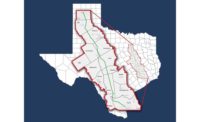Los Angeles — With $2.5 billion in high-speed rail work currently under contract in California, advocates now are focusing on public-private partnerships, transit-oriented development and multimodal connections around the planned ultimate route between Sacramento and San Diego. In Los Angeles alone, the Metropolitan Transportation Authority is pondering a 2016 ballot measure for a half-cent sales-tax increase and an unsolicited proposal policy, plus a $1-billion redevelopment of downtown Union Station.
Phil Washington, CEO of LA Metro, told attendees of the U.S. High Speed Rail Association’s December conference that the agency hopes to take advantage of an expedited project delivery program in the new five-year reauthorization legislation to complete the last 2.5 miles of the Purple Line between downtown and UCLA. The proposed ballot initiative would extend Measure R, the original 2008 voter-passed initiative, and add another $120 billion for construction programs. “My worry is capacity—can you handle all the work?” he asked engineers and contractors in the audience. LA Metro will host a mega-industry forum in February for both the construction industry and potential equity partners, he added.
The future high-speed rail line will enter San Francisco through Transbay Terminal, around which 18 buildings are going up—a prime example of transit-oriented development, said Jeff Morales, CEO of the California High-Speed Rail Authority. A 22-mile design-build contract will be awarded early in 2016 to one of five bidders, he said. Cap-and-trade funds will provide at least $500 million a year for the program, and the agency is on track to spend $2.2 billion by Sept. 30, 2017, the deadline to do so according to the ARRA program. “Between 2018 to 2020, a test track will be up and running,” he said. But these efforts, Morales noted, are far behind the rest of the developed world; Japan is celebrating 50 years of operating high-speed rail with no fatalities.
Rod Diridon, emeritus executive director of the Mineta Transportation Institute, called the U.S. the only industrialized country without a high-speed rail system. “In Japan, there are four companies making a profit … even Turkey has high-speed rail under construction,” Morales said. “The U.S. has 4 percent of the world population and contributes 30 percent of greenhouse gases. We’re the bad guy.”
Armin Kick, director of business development with Siemens, noted the progress of All Aboard Florida, a 125-mph rail line between Orlando and Miami now under construction with anticipated service in 2017. He said that line, as well as the future link between San Francisco and Los Angeles, is comparable to the Madrid-Barcelona line. All three pairs will feature rides of less than three hours. “At three hours, rail is 50/50 with air” in market competition, he said.
Private competition “forced” innovation and increased rail’s market share in Italy, which now has 10,500 miles of high-speed rail blended with other types of rail, said Marco Stegher, America Areas manager with Italferr, an Italian engineering consultant. In 2012, when the Italian government allowed private sectors to compete with the state-run rail agency to operate some routes, it resulted in new ticketing innovations, marketing and tiers of service; the Rome-Milano line’s traffic increased 60%, and rail captured 63% of total transportation market share, almost double, he added. A 270-km-long line connecting Italy to France is now underway; the approximately $25-billion, 10-year project will include a 57-km tunnel.
With such precedents in Europe and Asia, Morales expressed confidence that tunnel construction for the California route is viable. One option under consideration would include a 35-mile tunnel under the Angeles National Forest from Santa Clarita into Burbank in Southern California. “Engineers can do anything—it’s just about how much to pay for it,” he said.




Post a comment to this article
Report Abusive Comment